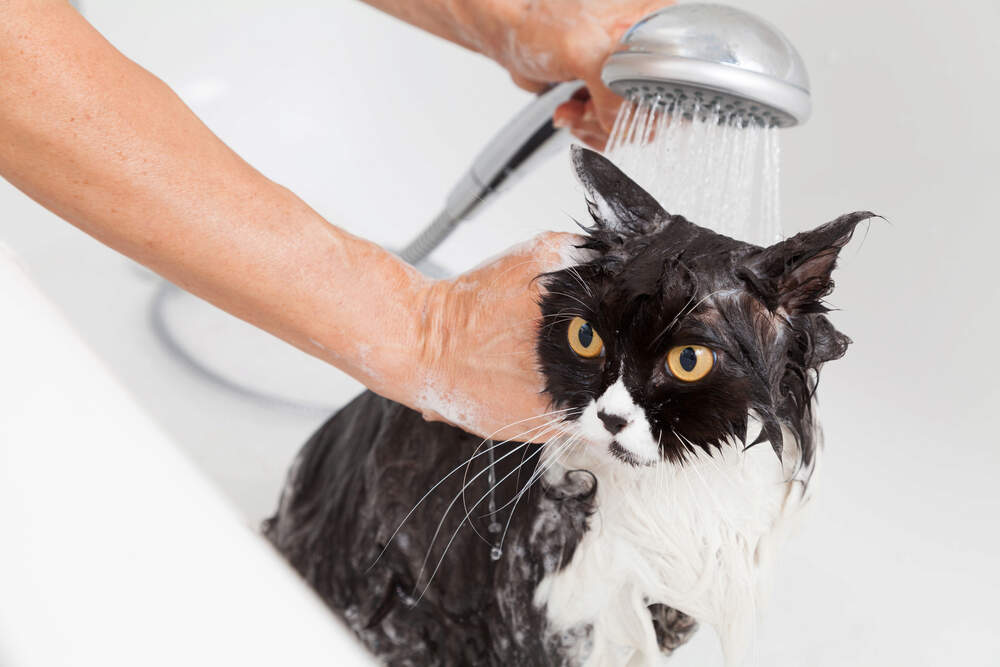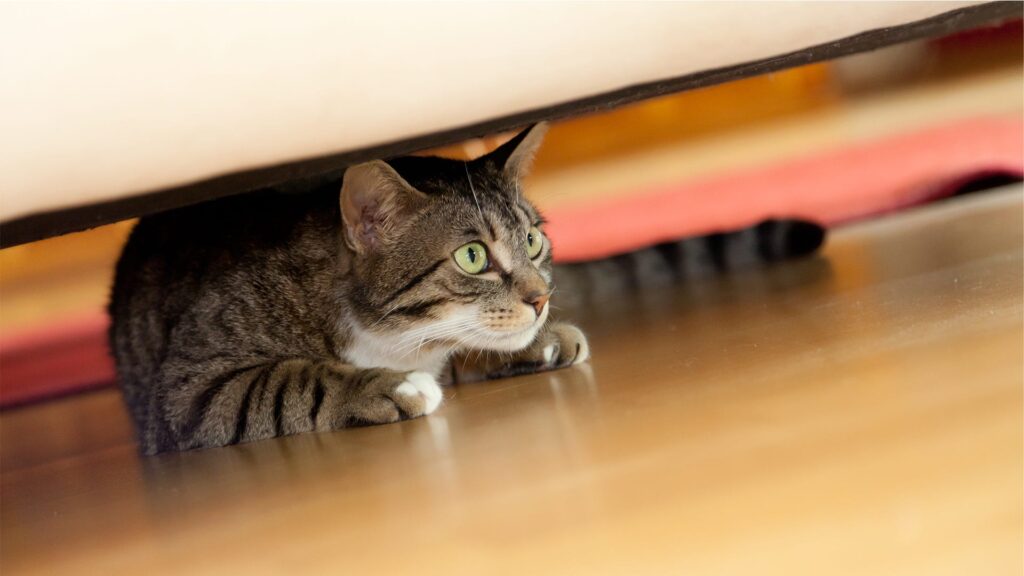A cat can go without using the bathroom for up to 48 hours. Cats have an innate instinct to keep themselves clean by grooming regularly, which includes cleaning their private parts.
However, there can be situations where a cat may hold its urine or feces for a longer period of time. This can happen when a cat is stressed, experiencing a medical issue, or is in an unfamiliar environment. In such cases, it is crucial to monitor their bathroom habits closely to ensure there are no underlying health concerns.
If a cat goes without using the bathroom for more than 48 hours, it is recommended to seek veterinary attention as it could be a sign of a serious medical condition.
Contents
- 1 The Role Of Urinating And Defecating In A Cat’s Health
- 2 Factors Affecting A Cat’s Bathroom Habits
- 3 How Long Can A Cat Go Without Urinating?
- 4 How Long Can A Cat Go Without Defecating?
- 5 Monitoring Your Cat’s Bathroom Habits
- 6 Tips To Encourage Regular Bathroom Usage In Cats
- 7 Frequently Asked Questions For How Long Can A Cat Go Without Using The Bathroom?
- 8 Conclusion
The Role Of Urinating And Defecating In A Cat’s Health
The role of urinating and defecating in a cat’s health is crucial for maintaining overall well-being. Waste elimination is a natural bodily process that allows cats to get rid of toxins and waste products from their system. Proper bladder and bowel function are essential for cats to stay healthy and prevent any potential health issues.
Cats need to urinate regularly to eliminate waste and maintain proper hydration levels. If a cat goes without urinating for an extended period, it can lead to a build-up of toxins and kidney problems. In addition, straining or not producing bowel movements regularly can be a sign of underlying health issues like constipation or gastrointestinal problems.
It is important for cat owners to monitor their cat’s litter box habits and ensure they are urinating and defecating regularly. Any changes in frequency, consistency, or urgency should be discussed with a veterinarian. In some cases, inadequate waste elimination can be a symptom of a more serious underlying health condition that needs proper medical attention.
By prioritizing and maintaining proper bladder and bowel function, cat owners can promote a healthy urinary and digestive system, ensuring the overall well-being of their feline companions.
Factors Affecting A Cat’s Bathroom Habits
There are several factors that can affect a cat’s bathroom habits. Age and life stage play a significant role in determining how long a cat can go without using the bathroom. Kittens and younger cats tend to have faster metabolism and may need to go more frequently. On the other hand, older cats may have decreased kidney function and may not need to eliminate as frequently as younger cats.
Diet and hydration levels also play a crucial role in a cat’s bathroom habits. Cats on a dry diet may require more frequent trips to the litter box compared to cats on a wet diet, as wet food tends to contain more water and can help keep the cat hydrated. Adequate hydration is important for maintaining healthy urinary function in cats.
Underlying medical conditions such as urinary tract infections, bladder stones, or gastrointestinal issues can also affect a cat’s bathroom habits. If a cat is experiencing difficulties or discomfort when using the litter box, it is important to consult a veterinarian to rule out any underlying medical conditions.
How Long Can A Cat Go Without Urinating?
It is important to monitor your cat’s urination habits as it can provide insights into their overall health. On average, a healthy cat will urinate two to three times a day. However, the frequency and duration of urination can vary depending on several factors.
Dehydration can have a significant impact on a cat’s ability to urinate. When cats do not drink enough water, their urine becomes concentrated, increasing the risk of urinary tract issues. It is crucial to encourage cats to drink water and provide them with a fresh and clean water source.
If your cat is unable to urinate for more than 24 hours, it may be a sign of a potential urinary blockage or obstruction. This is a medical emergency and requires immediate veterinary attention. Some signs to watch out for include frequent trips to the litter box without producing urine, straining while urinating, and blood in the urine.
Understanding your cat’s normal urination patterns and recognizing any changes can help in detecting potential urinary health problems early on.
How Long Can A Cat Go Without Defecating?
How long can a cat go without using the bathroom? The frequency and consistency of a cat’s bowel movements can vary widely, but it’s generally considered normal for a cat to defecate once or twice a day. However, some cats may only go every other day or even every few days without any issues.
Constipation is a common issue in cats and can be caused by various factors such as inadequate fiber intake, dehydration, or underlying health conditions. If a cat is constipated, they may exhibit symptoms like straining in the litter box, small or hard stools, or even no bowel movements at all. In severe cases, constipation can lead to a blockage or obstruction in the intestines, which requires immediate medical attention.
It’s important for cat owners to monitor their pet’s litter box habits and look out for any changes or signs of constipation. If you notice your cat is having difficulty defecating or has not used the bathroom for an extended period, it’s best to consult with a veterinarian to rule out any serious underlying issues.
Monitoring Your Cat’s Bathroom Habits
Establishing a baseline for your cat’s regular bathroom routine is important to ensure their overall health and well-being. Cats are known for their impeccable cleanliness, so any change in their bathroom habits can be a cause for concern. It is crucial to pay attention to signs that indicate a potential bathroom issue, such as straining to urinate, frequent trips to the litter box, or blood in their urine or stool.
If you notice any of these signs, it’s important to consult with a veterinarian for a proper diagnosis and treatment. Cats can develop urinary tract infections, constipation, or other health issues that may require medical intervention. Regular veterinary check-ups can help identify any potential problems early on, and your vet can provide guidance on how often your cat should be using the bathroom. Remember to always provide a clean litter box and encourage your cat to stay hydrated by providing fresh water at all times.

Credit: www.adamspetcare.com
Tips To Encourage Regular Bathroom Usage In Cats
Creating a conducive bathroom environment, promoting hydration and a balanced diet, and regular exercise and playtime are essential factors to consider for optimal digestion and metabolism in cats.
A comfortable and clean litter box placed in a quiet and private area of the house will encourage your cat to visit the bathroom regularly. Ensure the litter is unscented and easily accessible.
Hydration is crucial for maintaining healthy bowel movements. Provide fresh water in a clean bowl and consider using a water fountain to entice your cat to drink more.
Feeding your cat a balanced diet with high-quality cat food that matches their nutritional needs is important. Talk to your veterinarian about the best diet for your cat’s age, breed, and health condition.
Regular exercise and playtime will aid in digestion and stimulate metabolism. Engage your cat in interactive play sessions, use puzzle toys, and provide climbing trees to keep them active.
Frequently Asked Questions For How Long Can A Cat Go Without Using The Bathroom?
Why Hasn’t My Cat Peed In 2 Days?
If your cat hasn’t peed in 2 days, it may be experiencing a urinary tract issue. It’s important to consult a veterinarian for a proper diagnosis and treatment.
What Happens If A Cat Hasn’t Peed In 24 Hours?
If a cat hasn’t peed in 24 hours, it may indicate a potential health issue. It’s important to contact a veterinarian for examination and advice on how to address the situation promptly.
What To Do If Your Cat Hasn’t Pooped In 3 Days?
If your cat hasn’t pooped in 3 days, it’s important to take action. First, ensure they have access to fresh water. If the issue persists, contact your veterinarian who can provide guidance and check for any underlying health issues.
What Happens If A Cat Goes Too Long Without Pooping?
When a cat goes too long without pooping, it may indicate a problem. It could be due to constipation, blockage, or an underlying health issue. It’s important to seek veterinary care to determine the cause and provide appropriate treatment.
Conclusion
Cats may have a reputation for being mysterious creatures, but when it comes to bathroom habits, they are quite predictable. It’s important to remember that every cat is unique, but in general, they should not go longer than 48 hours without using the bathroom.
If you notice your feline friend experiencing any difficulties, it’s best to consult with a veterinarian for further guidance and to ensure their overall well-being. Taking care of their bathroom needs is essential for their health and happiness.

Katie Lindsey is a passionate cat lover and founder of Cats Solution, a comprehensive resource for all things feline. With a lifelong love for cats and extensive knowledge in their care and behavior, she provides expert advice and solutions to cat owners. Through her website, Katie fosters a supportive community where cat enthusiasts can find guidance and heartwarming stories. A dedicated advocate for animal welfare, Katie also promotes responsible pet ownership and adoption. Join her on this purr-fect journey celebrating the joy of feline companionship.



